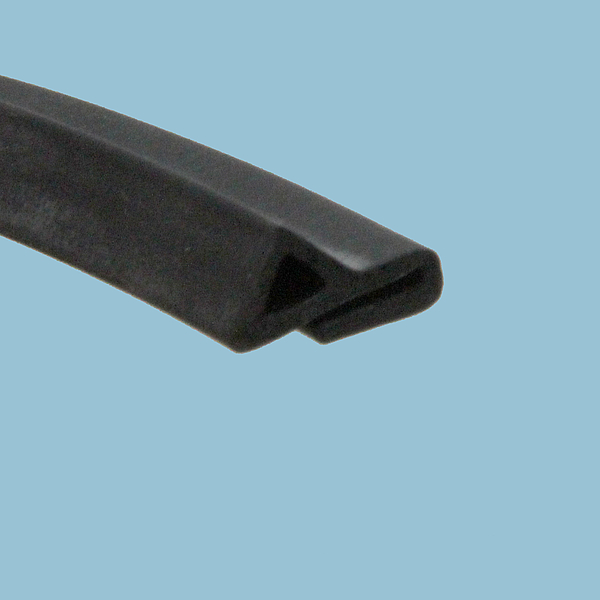ZI-210 NBR Gasket
NBR General Information
NBR (Nitrile Butadiene Rubber) is a copolymer of butadiene and acrylonitrile.
NBR is superior to most elastomers as far as the compression set, tear and the abrasion resistance are concerned.
NBR has however a poor resistance against ozone, sunlight, and weathering. It should therefore not be stored or installed in the vicinity of electric motors or other ozone generating equipment and should be protected from direct sunlight.
NBR has a good resistance against oil-based hydraulic fluids, fats, animal and vegetable oils, greases, water (not steam), and air. The quality of NBR gaskets mostly depends on the percentage of acrylonitrile in the base polymer. The higher the acrylonitrile content, the better the resistance to oils and fuels with a simultaneous deterioration in the elastic behavior (see also compression set) and the flexibility at low temperatures. In the end, a compromise is found between the acrylonitrile content and the physical characteristics which must be met by the product.
According to the cleaning company IMMLER the NBR gasket is resistant to the common detergents used for the cleaning of air ducts (test report only in German)
Its characteristics make it one of the most widely used elastomers in the seal industry today.
Is the NBR gasket adequate for air-ducts installed in commercial kitchens? Not quite!
The gaskets made of NBR have a low resistance to steam and resist temperatures up to 90°C only. NBR is also sensitive to ozone which can be found in the vicinity of electric equipment. Ozone is also be generated by some devices designed to neutralize odors. UV-Licht, das manchmal zur Bekämpfung von Bakterien und/oder (in gewissem Umfang) zur Desinfektion von Lüftungssystemen eingesetzt wird, hat ebenfalls einen negativen Effekt auf NBR-Dichtungen.
For kitchen applications we therefore suggest to use the METU-FORM SRX Joining Clips and Access Doors with Silicone gasket and metal knobs (up to +200°C).
Material
Nitrile Butadiene Rubber NBR (oil resistant quality).
Made of unsaturated butadiene and acrylonitrile polymers.
Color: dark grey
Without silicone: yes (1)
Without halogen: yes
Without Polytetrafluorethylene: yes
Adhesive: only used on some NBR product versions (usually Loctite 406).
(1) The NBR gasket is made of a silicone-free blend. The production does not involve any silicone either. No guarantee can nevertheless be given that the product won‘t enter into contact with silicone during storage, transport and handling.
Operating Temperatures
From ≈ -25°C to ≈ +90°C
Under certain circumstances only up to +50°C because of poor compression set characteristics. In contact with oils, other liquids and chemicals these temperatures can be significantly reduced. These facts underscore the necessity of conducting tests in order to confirm the suitability of the products for the intended purpose.
Behavior under Fire
Building Material Classification : No information available.
Fire resistance: burns
Smoke Emission: No information available.
Food Industry
Not suitable for the food industry.
Outdoor Exposure
Weathering and UV Resistances (DIN 53 386): Not resistant.
Ozone resistance (DIN 53 509): cracking level 3
Resistances
Chemicals and oils are available in very different qualities. Their properties vary depending on their concentration, operating temperatures, possible mix with other chemicals and the eventual presence of impurities. This is why gasket manufacturers only provide general information about the resistance of their products to various chemicals. In view of the above it is advisable that the client runs some tests in order to assess if the gaskets are suitable for the intended application. We regret not being able to provide more precise information. Resistances only apply to the NBR material, not the adhesive. The NBR properties could be influenced by the adhesive.
(2) The NBR gasket we offer is resistant to most mineral and organic oils. We can however not guarantee that it is also compatible with the oils you are using over the long term. It is not to be excluded that the NBR gaskets have to be replaced depending on how aggressive the oils are.
Please bear in mind that elastomers have generally a limited lifetime (i.e. through aging). For that reason, we recommend regular inspections and replacement intervals.
It is therefore necessary that the client contacts his/her oil, emulsions and other chemicals supplier(s) who should confirm that their products are compatible with the materials we use at the specific operating temperatures and conditions of the installation (link to information about steels, gaskets, etc.).
Please also refer to the VDI 3035: Design of machine tools, production lines and peripheral equipment for the use of metalworking fluids (Platics 2.2.7.4)
If you send us an inquiry or order, we assume that the above points have been clarified.
Gasket Useful-life Expectancy
Gasket suppliers cannot give any guarantees regarding their gaskets, and consequently neither can we. These are limitations which do not apply only to our products but to any products involving gaskets. Our METU-FORM duct system is tight as long as the gaskets keep their properties, and these do inevitably change over time. Replacing gaskets whenever necessary (i.e. when leakages appear) is a normal procedure and cannot be seen as a malfunction or a defect. When dismantling the SRX joining clips, we recommend to always replace the gasket.
REACH
See general information on the REACH regulations
VDI 6022
No information available.
PWIS
Please refer to the ZI-102
Important Information
The present additional information have been compiled carefully. They are only indications intended to provide counsel. They are the result of internal tests and information provided by our suppliers. There is no guarantee for completeness and accuracy. More precise information can only be made available through focused tests on a case by case basis. The provided indications do not discharge the user from conducting his own tests. Please make sure that the product is suitable for the intended use. Changes, errors and omissions excepted. Free translation: the German version prevails.

